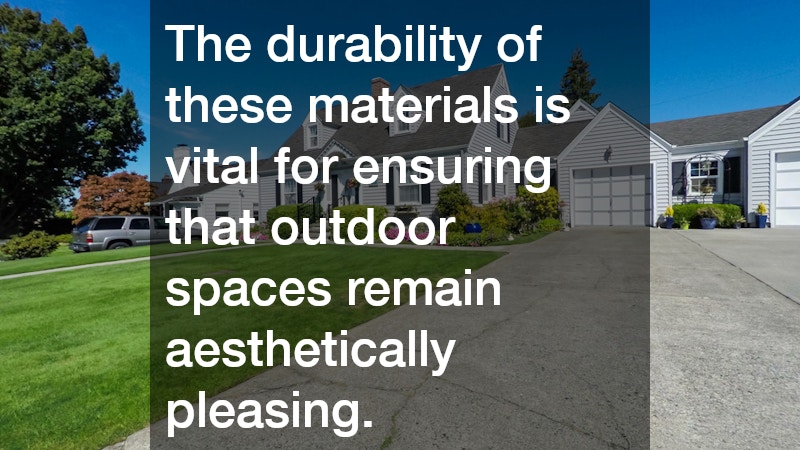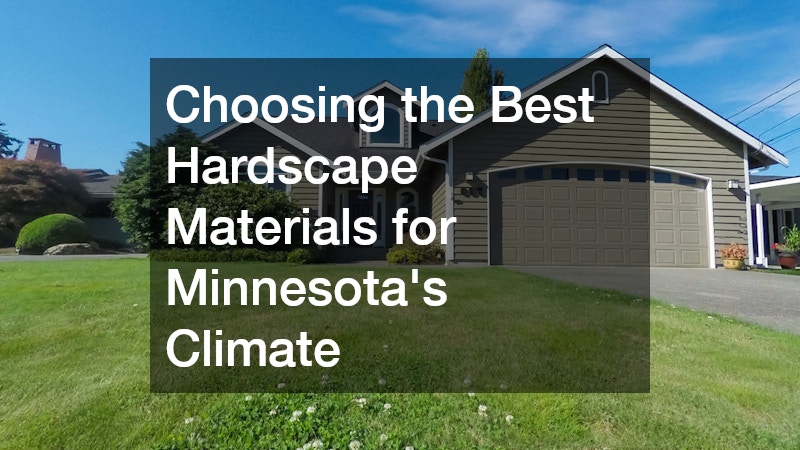
Choosing the Best Hardscape Materials for Minnesota’s Climate
Minnesota’s climate is notorious for its long, harsh winters and temperature fluctuations, making it crucial to select the right hardscaping materials. The durability of these materials is vital for ensuring that outdoor spaces remain aesthetically pleasing and functional throughout the year.
Factors such as freeze-thaw cycles, moisture levels, and local weather patterns must be considered when choosing hardscaping solutions. Selecting materials that are not only durable but also complement the surrounding environment will enhance the beauty of the outdoor space.
In this article, we will explore various hardscape materials suitable for Minnesota’s climate, examine maintenance strategies, and consider cost implications. This comprehensive guide aims to assist homeowners and landscapers in making informed decisions for resilient outdoor installations.
What are the Most Durable Hardscape Materials for Minnesota’s Climate?
Pavers and Natural Stone
Pavers and natural stone are popular choices due to their ability to withstand fluctuating temperatures and heavy precipitation. Locally sourced materials, like limestone and bluestone, are often better suited to the climate, reducing the risk of cracking and other damage.
Pavers offer flexibility in design and are highly customizable; they are often preferred for their aesthetic versatility. Natural stone offers a timeless appeal that seamlessly integrates with Minnesota’s natural landscapes, ensuring long-lasting beauty.
The permeability of pavers reduces water accumulation, helping mitigate potential damage through freeze-thaw cycles. By selecting high-density stones, homeowners can further enhance the hardscape’s resistance to harsh weather conditions.
Concrete and Its Variants
Concrete is another versatile material that can be used in various forms, such as stamped or colored, to enhance visual appeal. While it offers durability, care must be taken to select concrete mixes that can withstand freeze-thaw cycles.
Stamped concrete allows for creative designs and textures, providing the look of stone or brick without the associated costs. Colored concrete can be used to complement architectural designs, but care should be taken to ensure long-lasting color retention in harsh weather.
For additional protection, concrete can be treated with sealants that prevent water penetration, extending the surface’s lifespan. Proper installation and curing are also critical to minimizing cracks and breaks caused by temperature changes.
How to Maintain Hardscape Surfaces in Freezing Temperatures?
Sealing and Protective Coatings
Sealing hardscape surfaces is essential to protect against water infiltration, which can lead to cracking during freeze-thaw cycles. Applying a high-quality sealant will create a barrier that deters moisture absorption, ensuring longer-lasting installations.
Nano-sealants can offer excellent protection by forming a nearly invisible layer, preserving the natural look and feel of the material. Regular resealing is recommended, especially before the onset of winter, to maintain optimal protection against harsh weather conditions.
Choosing sealants that provide UV protection can also prevent discoloration and deterioration caused by sun exposure. An annual sealant application can significantly reduce maintenance needs and prolong the life of hardscape features.
Snow and Ice Management
Effective snow and ice management is key to preserving hardscape integrity during Minnesota’s brutal winters. Mechanical removal methods, such as shoveling and snowblowing, are preferred over chemical de-icers to prevent surface damage.
Eco-friendly de-icing alternatives, such as sand or specialized products free of harmful salts, can minimize environmental impact while improving traction. Prompt removal of snow and ice will reduce the stress on hardscape materials, preventing premature wear and tear.
Temperature-responsive mats are an innovative solution that can be installed beneath surfaces to melt snow and ice, reducing the need for manual removal. By investing in effective snow management strategies, homeowners can maintain the safety and longevity of their hardscape areas.
What are the Cost Considerations for Hardscape Projects in Minnesota?
Initial Installation Costs
The initial costs of hardscape projects can vary significantly based on material choice, design complexity, and installation techniques. Higher upfront investments in durable materials can lead to long-term savings by reducing maintenance and replacement costs.
Locally sourced materials often incur lower transportation costs, contributing to overall budget efficiency. Customization options such as textures, patterns, and colors can add to initial expenses but enhance the value and appeal of the installation.
Professional installation is recommended to ensure optimal performance, particularly in a climate as challenging as Minnesota’s. Skilled installers can provide valuable insights into material performance and cost-effective solutions tailored to specific needs.
Long-term Maintenance Expenses
Long-term maintenance expenses should be considered when planning a hardscape project in Minnesota. Regular maintenance measures, such as sealing and cleaning, can prevent costly repairs and replacements due to climate-induced damage.
High-quality materials often incur lower maintenance costs due to their inherent durability and resistance to adverse weather. Anticipating seasonal maintenance needs and budgeting accordingly can help manage expenditures effectively over the lifespan of the hardscape.
Technological advancements in material science are leading to more resilient and low-maintenance hardscaping options. By choosing modern solutions with built-in protection features, homeowners can minimize the need for frequent upkeep.
Conclusion
In conclusion, selecting the appropriate hardscape materials for Minnesota’s climate requires careful consideration of durability, aesthetics, and cost. Homeowners and landscapers should prioritize materials that can withstand freeze-thaw cycles and opt for eco-friendly maintenance techniques.
This article has highlighted key materials and strategies for ensuring resilient and visually appealing outdoor spaces in a challenging climate. By making informed decisions, you can create a beautiful and enduring hardscape installation that enhances the value and enjoyment of your property.

